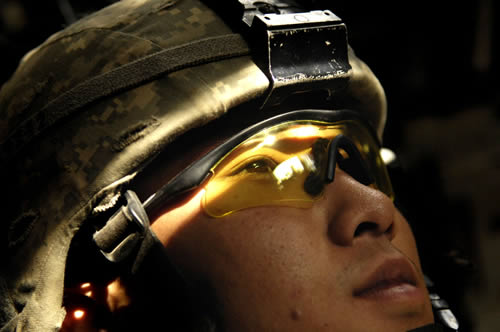While the high death toll from roadside bombs in Iraq is well known, fragmentation explosions and blast effects are taking their toll among severe casualties. Frequent occurrences are eye injuries. According to Army medical records, 16% of the medical evacuations from combat zones since March 2003 have included serious eye injuries – compared to 9% in Vietnam and the 1990- 91 Gulf War. Yet, many of such eye injuries could be avoided with proper use of protective eyewear.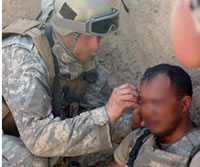
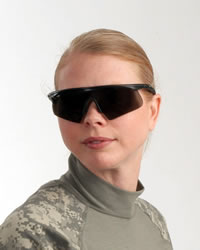 Dust, low-velocity fragments, high velocity impact and laser radiation are posing significant threat to warfighters in combat and training. Yet, almost all ballistic injuries can be prevented by using polycarbonate shields currently available with spectacles and goggles. “It is imperative that commanders ensure that their soldiers use their protective eyewear whenever engaging in field tactical operations – in combat, security and training” a recent US Army research recommends. Yet, using any ‘performance eyewear’ is not enough, and could, sometime, be extremely hazardous.
Dust, low-velocity fragments, high velocity impact and laser radiation are posing significant threat to warfighters in combat and training. Yet, almost all ballistic injuries can be prevented by using polycarbonate shields currently available with spectacles and goggles. “It is imperative that commanders ensure that their soldiers use their protective eyewear whenever engaging in field tactical operations – in combat, security and training” a recent US Army research recommends. Yet, using any ‘performance eyewear’ is not enough, and could, sometime, be extremely hazardous. 
Military medical professionals reminding troops that not all “ballistic eyewear” provides the same protection and some styles might pose more danger than defense. In fact, some brands have been banned by the military because they do not pass safety tests. Wearing protective eyewear designed for sports or ‘performance’ can result in combat-related eye injuries which could be avoided with tactical eyewear designed for combat.
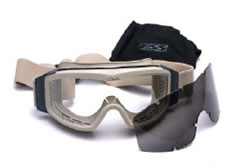 The solution to laser protection is more difficult since military lasers operate in different wavelengths that have to be addressed with specific filters. In theory, to be effective, the soldier will have to
The solution to laser protection is more difficult since military lasers operate in different wavelengths that have to be addressed with specific filters. In theory, to be effective, the soldier will have to 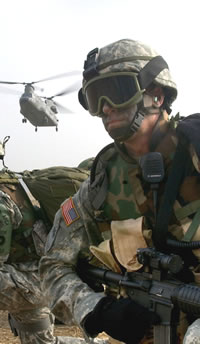 carry and install the appropriate filter according to a reading from a laser detector, prior to an attack. A more practical concept will deploy a multi-band filter that could sense and block specific threats as they are detected by the individual or the combat unit.
carry and install the appropriate filter according to a reading from a laser detector, prior to an attack. A more practical concept will deploy a multi-band filter that could sense and block specific threats as they are detected by the individual or the combat unit.
The standard issue protective eyewear includes Ballistic Laser Protective Spectacles (BLPS), Special Protective Eyewear Cylindrical System (SPECS), and Sun, Wind and Dust Goggle (SWDG). The Army determined that when laser protection is required, soldiers should continue to use SPECS, BLPS, or SWDG at this time. However, when laser threat is not imminent, a wider range of more stylish protective eyewear is available for troops. These products are tested by the Army for durability and ballistic protection, has been approved for use and are now available for soldiers to choose from. All military approved, commercially available products offer ballistic and UV protection, and are available in clear and gray sunglass tainted lenses. While the new eyewear is offering modern design and attractive style, lens tints other than clear or gray are not authorized, including yellow, orange, rose, and others known as “blue blockers” as they degrade color recognition and therefore could have adverse effect on mission performance.
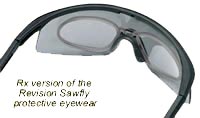 Soldiers requiring prescription lenses for goggle applications also have more choice among several modern designs, including the Uvex XC spectacles, ESS ICE 2, Revision Sawfly and Body Specs Pistol models.
Soldiers requiring prescription lenses for goggle applications also have more choice among several modern designs, including the Uvex XC spectacles, ESS ICE 2, Revision Sawfly and Body Specs Pistol models.
ESS Land Operations and ESS Vehicle Operations may be used as alternatives to the standard SWDG for wear over prescription eyeglasses or, ESS Profile NVG goggle may be used with its designated prescription lens carrier. The Army stressed that wearing non approved spectacle or goggle may result in serious injury.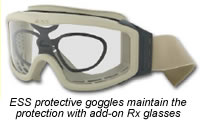
You can check a partial list of approved tactical eyewear here.
In this series Defense Update covers the following topics:
- Body Armor Suites
- Ergonomic Body Armor Designs
- Ballistic Helmets
- Physiological and Physical Challenge of Body Armor
- Eyewear Protection for the Warfighter
- Tactical Benefits of Laser Eye Surgery (LASIK / PRK)
- Cooling with Phase Change Materials (PCM)
- Improving the Combat Survival Rate Among the Wounded
- Load Carrying Systems for the Infantry

